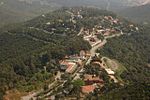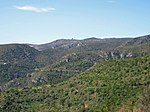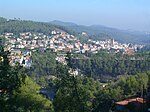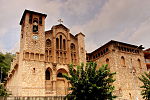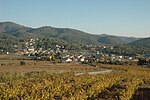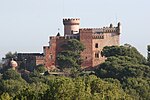Begues
Municipalities in Baix LlobregatPages with Catalan IPAProvince of Barcelona geography stubs

Begues (Catalan pronunciation: [ˈbeɣəs]) is a municipality in the comarca of Baix Llobregat in Catalonia, Spain. It is situated in the south-west of the comarca, and its municipal territory covers most of the Garraf massif including the peaks of el Montau (658 m) and La Morella (594 m). Begues is an important tourist centre, and it is connected with Avinyonet del Penedès and with Gavà by a local road. Recently, Begues signed a contract with the mental asylum "Pere Mata" so that the mentally challenged could contribute to the village's economy by wrapping up the popular Spanish lollipop Chupa Chups in the local factory.
Excerpt from the Wikipedia article Begues (License: CC BY-SA 3.0, Authors, Images).Begues
Carrer Joan Baptista Borés,
Geographical coordinates (GPS) Address Nearby Places Show on map
Geographical coordinates (GPS)
| Latitude | Longitude |
|---|---|
| N 41.334 ° | E 1.922 ° |
Address
Carrer Joan Baptista Borés 6
08859
Catalonia, Spain
Open on Google Maps


